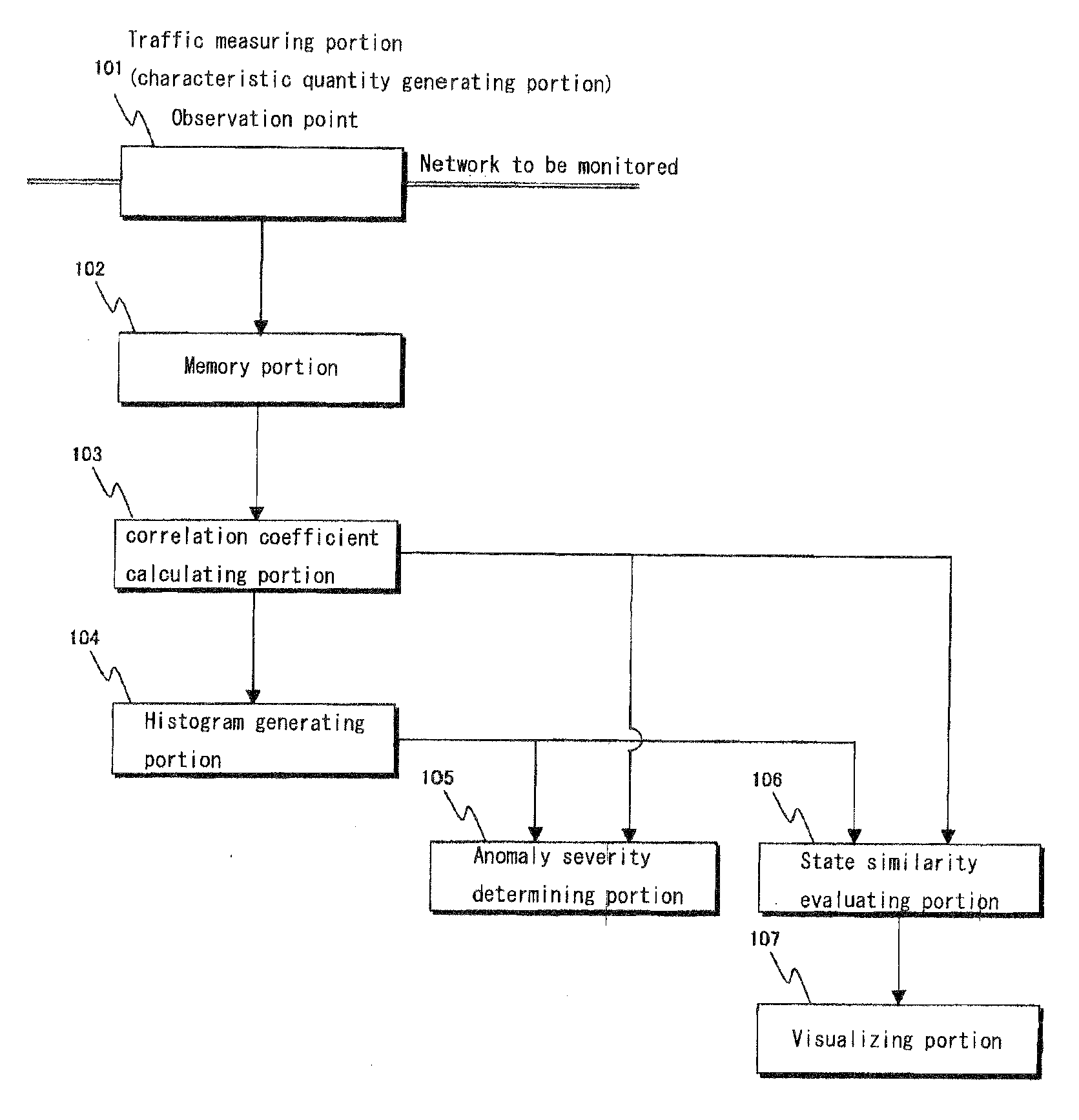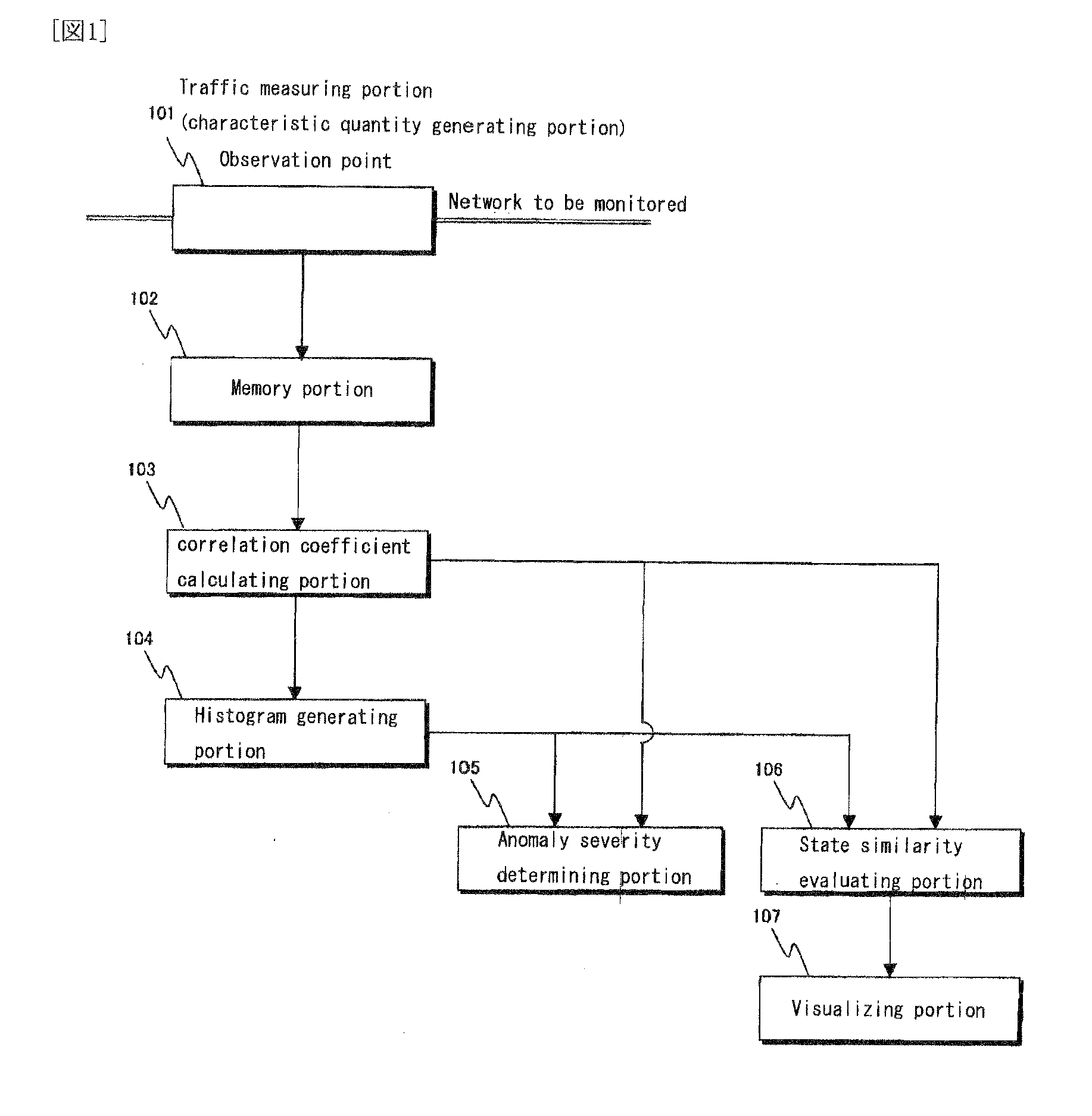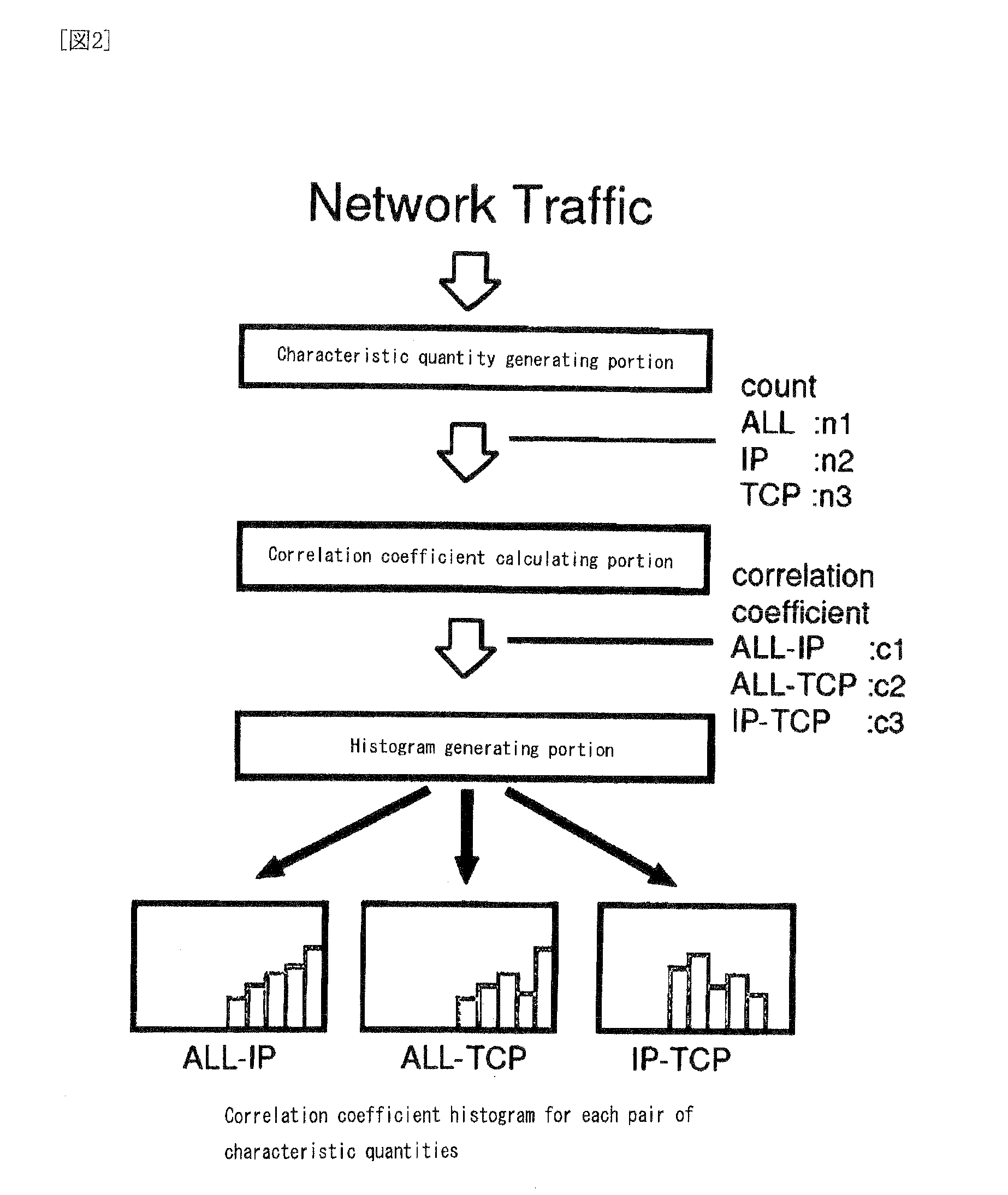Network failure detection method and network failure detection system
a network failure and detection method technology, applied in the field of network failure detection methods and network failure detection systems, can solve the problems of not being able to grasp, hardly offering any definite clue enough, etc., and achieve the effect of reducing the time necessary, enhancing the severity of anomalies of each column, and facilitating estimation
- Summary
- Abstract
- Description
- Claims
- Application Information
AI Technical Summary
Benefits of technology
Problems solved by technology
Method used
Image
Examples
verification experiment 1
[0101]Next, an experiment will be described to verify how the anomaly severity determining portion 105 of FIG. 1 works in the treatment of traffic flowing through a network in operation.
[0102]First, the first method for evaluating the state of a network for detecting an anomaly as mentioned above will be described. The network used in this experiment is a LAN where about 50 hosts are connected in a configuration as shown in FIG. 8.
[0103]For the calculation of correlation coefficient, each time slot has a width of 10 seconds; the sliding window has a width corresponding to 30 time slots; and the sliding distance is equal to 5 slots. The experiment was started at a certain day of May, 2005, and a group of histograms were generated daily. The correlation coefficient histogram stands on classes having a width of 0.1. The traffic was divided according to the types described below, and packets within each time slot were counted divided by the types of traffic. The threshold required when ...
example 1
Large Scale Scan
[0125]In certain windows, scanning was found to occur at a specific port of all the hosts, and scanning was also found to occur at various ports of some hosts. For the windows in question, correlation coefficients of a considerable number of combinations exhibited anomalous values, and particularly the majority of the combinations with a high anomalous score include one of the following three feature values: TCP IN / dst:144-1023, TCP IN / dst:1024-2999, TCP IN / SYN
[0126]For example, the combination: TCP IN / SYN and TCP IN / dst:144-1023
rarely shows a strong correlation during the normal operation state of a network. However, as shown in the correlation coefficient histogram shown in FIG. 11, the correlation coefficients observed during the windows in question have a value as high as 0.98. In view of this, a survey was performed on the traffic observed during those windows with a special attention paid to the two feature values, and it was found that large scale scanning d...
example 2
Login attempts to SSH (TCP22)
[0127]For other windows involved, login attempts to SSH (port No. 22) were observed for all the hosts. For example, the combination: TCP IN / SYN-TCP OUT / SYN
which has normally a strong correlation exhibited only a weak positive correlation. Furthermore, the combination: TCP IN / dst:SSH-TCP IN / SYN
which normally rejects the calculation of correlation coefficients exhibited a strong positive correlation with, however, the occurrence probability being very small (FIG. 12).
PUM
 Login to View More
Login to View More Abstract
Description
Claims
Application Information
 Login to View More
Login to View More - R&D
- Intellectual Property
- Life Sciences
- Materials
- Tech Scout
- Unparalleled Data Quality
- Higher Quality Content
- 60% Fewer Hallucinations
Browse by: Latest US Patents, China's latest patents, Technical Efficacy Thesaurus, Application Domain, Technology Topic, Popular Technical Reports.
© 2025 PatSnap. All rights reserved.Legal|Privacy policy|Modern Slavery Act Transparency Statement|Sitemap|About US| Contact US: help@patsnap.com



